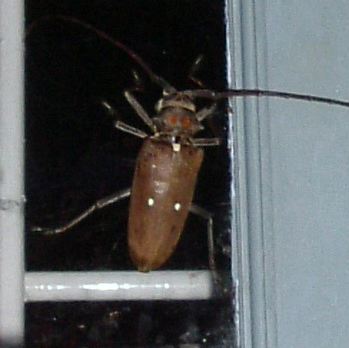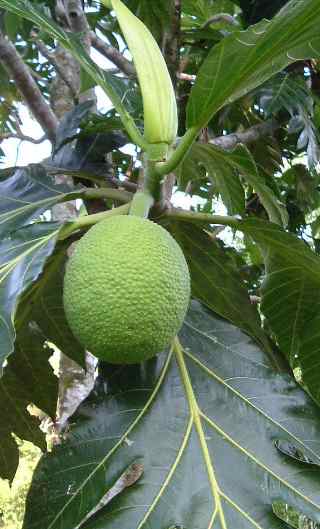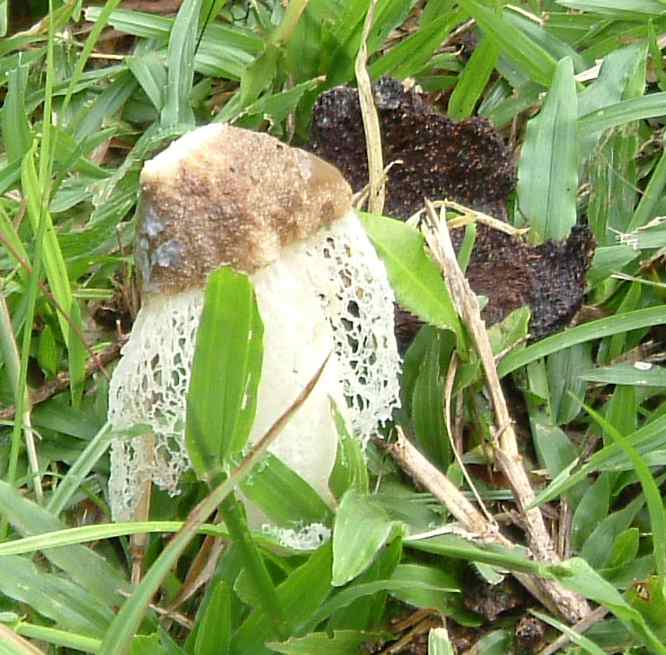The Flora and Fauna of Lundu Area
(in progress)
I have never been able to see everything that
lives around here, but I have seen much, and the following is a
selected list, with
names in Iban:
Birds:
•Brahminy Kite (Haliastur
indus) - burunglang (NB: "burung" means "bird";
usually prefixed
to bird names in Iban.)
•Bushy-Creasted Hornbill (
Anorrhinus galeritus) - burung babi One day I was
working
in our back yard, and from the jungle I heard a creaking, cackling,
harsh
coughing noise. At first I thought, "It's those damn monkeys
after
the corn again"; but I then I heard calls coming from several
directions out
of the jungle, I looked up and saw a flock of five Burung Babi
flying
around through the trees. Hornbills, right in our backyard!
A
very heartening sight, because it means the local forest is healthy
enough to support them.
•Coucal (Centropus
sinensis Stephens) - burung bubut Keeps close to the
ground, and
makes a deep "boot-boot-boot" hoot.
•Greater Racket-tailed Drongo
(Dicrurus paradiseus L.) - burung kempat tiang This
bird
has the two outermost of its tail feathers elongated into naked quills
almost
as long again as the bird itself and ending in little tufts of
feather. This tail makes the drongo something like the Fokker
Triplane of the Borneo bird-world: it's not very fast, but boy can it
climb and maneuver! And
although the Drongo is all black, like the Red Baron it is a brave
bird.
I have several times seen drongos harrass raptors, flying circles
around
them and pecking them. For this reason, though the Drongo is not
an
omen bird, the Ibans respect them. Their call sounds like someone
banging
on a pipe.
•Hill mynah (Gracula
religiosa L.) - burung tiong Pleasant to hear
their swooping in
the mornings. If you whistle at them, they'll whistle back.
I
have heard of two or three mynahs who "adopted" people and came to live
in
their houses. They fly in pairs, male and female, I presume.
•Long-tailed Parakeet
(
Psittacula longicauda) - burung bayan Greenish.
The
male has a long blue central spike in his tail. They often fly in
flocks,
and if a flock flies low and fast over you, you hear a loud whooshing
sound
like some airplane.
•Sunda Frogmouth (Batrachostomus
cornutus?) - burung pama' One night I was sleeping
in my
father-in-law's house and I heard a loud croak outside the
window. Next
day I looked out at the frangipani (cempaka) tree. A
short,
rough, thick leafless branch resolved itself into a little bird,
miraculously
camouflaged with its feathers checkered randomly with grey, black, and
white.
As I observed over the day, this was a well-grown chick. Its
mother
visited it at long intervals. The chick sat motionless all day,
two
or three days, and then left.
•Bulbuls
No pictures?
Sorry! I have found birds impossible to photograph with the
equipment I've got.
Mammals:
•bearded pig (Sus
barbatusbarbatus Müller) - babi kampong ("forest
pig")
•mousedeer (Tragulus
javanicus
) - pelandok
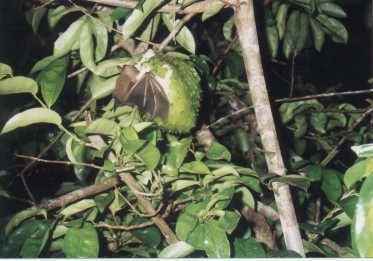
This is one fruit bat (probably Cynopterus
brachyotis) of a bunch that came around one night to munch on the
soursops
(Anona muricata).
•monkey (your basic
monkey) (
Maccaca fascicularis) - kera' Your basic
monkey. They can be a real nuisance when they raid gardens and
eat the corn. I have shot at them but never hit one.
•porcupine (Hystrix
brachyura longicauda Marsden) - landak. Sebuyau landai.
Reptiles:
Monitor lizards; house-lizards (chichak and
kokgo). Flying lizards... Look carefully here,it's
resting on an orchid leaf----
Snakes--vipers, cobras,
pythons... and benign snakes. Frogs, toads,
Fish:
Sea-fish: mackerel of many sorts, most extremely
yummy. Sharks, rays, giant sunfish 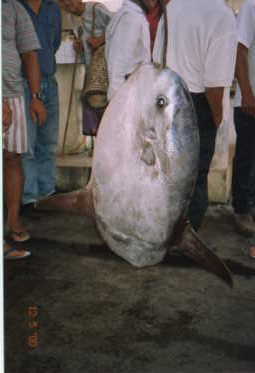 (see picture
), red snappers, parrotfish, etc.
(see picture
), red snappers, parrotfish, etc.
Freshwater fish: ikan keli, catfish, minnows (ikan
seluang)
Insects:
I've counted two dozen kinds of
ants at least around the house and garden but I can't give
scientific
identifications of them except for two, which happen to be two kinds
that
bite, and so are more noticeable: Weaver ant (Oecophylla
smaragdina
Fabr.) - kesa' a red ant that builds nests in trees of
leaves
it stitches together; the pain of its bite is not too sharp and lasts
momentarily. Fire ant (Tetraponera rufonigra) - semada'.
This is a
small black ant that marches in lines and whose bite is very sharp,
painful, and lasting. People say they can kill animals as large
as geese when they swarm on one.
My son, on his birthday, received from his cousin
the present
of a huge and spectacular beetle. 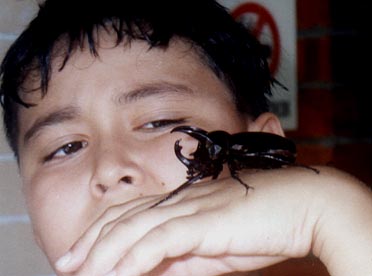 This is probably Calchosoma caucasus, the second
largest beetle
in Malaysia, and it is male. A female found it three weeks later
and it was love at first site. The
female disappeared, and we hope her eggs have success.
This is probably Calchosoma caucasus, the second
largest beetle
in Malaysia, and it is male. A female found it three weeks later
and it was love at first site. The
female disappeared, and we hope her eggs have success.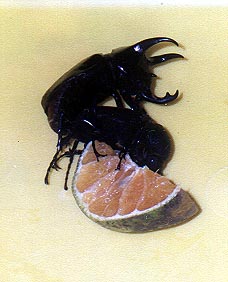
We understand that the Japanese enjoy keeping big beetles as
pets. Stick them on a hunk of fruit and they stay there--the
refrigerator-magnet as pet.
One evening a longicorn beetle flew up and sat on our kitchen window.
Longicorns are the genus of beetles that A.R. Wallace collected
so intensively in Sarawak during his visit in the 1850s. I haven't
identified it.
Trees:
Lundu has its very own tree, Shorea lunduensis Ashton.
[Click for a botanical description.]
This is a type of engkabang, a dipterocarp which bears big oily
seeds
with "wings" on them. Here on the left is a picture
of such seeds from a different species of engkabang, Shorea
macrophylla.
Needless to say, the fact that it is so local doesn't
prevent
people from logging them.
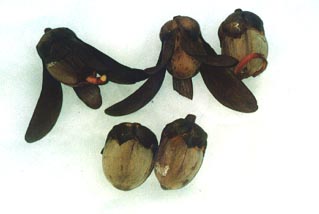
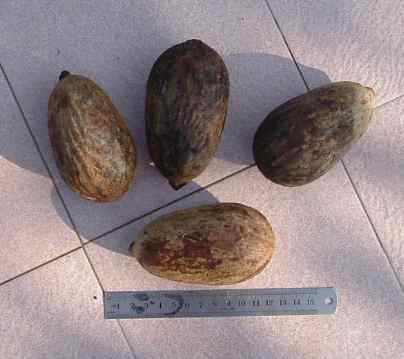
Sarawak boasts a very special tree which Dayaks
call belian (Eusideroxylon spp.),
and has often been called "ironwood" by the old English writers.
The timber from this tree is so heavy it sinks in water, and is immune
to rot, termites, and other insects. Belian is the wood of choice
for posts and beams in houses, and roofs made of belian shingles (it
splits finely and neatly) may last 60 years and more. Old posts
from abandoned houses can be found in the jungle over 100 years old,
still perfectly sound. In both engkabang and belian seeds, note
their size. There is little topsoil in tropical rainforest, and
thus tree-seeds contain large amounts of starch to feed the young plant
until it it esstablished.
All around the house we have planted fruit trees.
The
divine durian, of course. (Take a look at my Durian
Page
.) Also soursops, rambutans, breadfruit and tarap (both species
of Artocarpus), citrus of several
varieties,
including lemons, green tangerines, little things for which there is no
word
in English but are called limau kasturi here, and
pomelos. Here's one of our breadfruits. The trees yielded
plentifully this year, 2004.
Plants:
Lundu also has its own orchid,
Orkid Lundu (sometimes
called Orkid Normah), Phalaenopsis violacea.
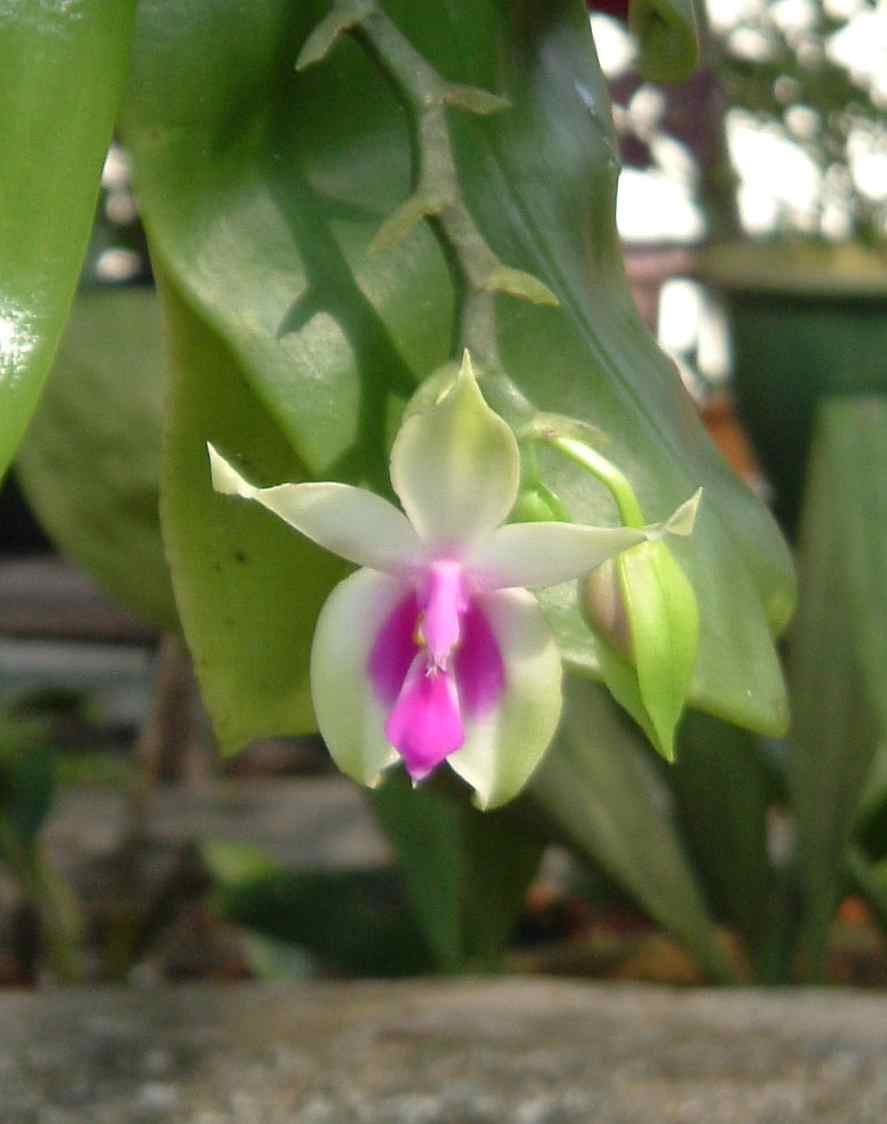
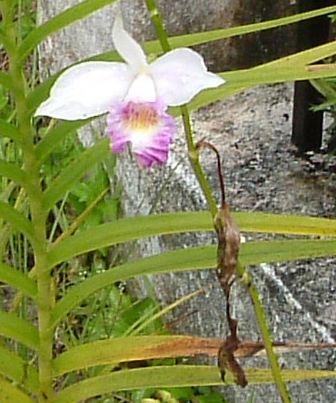
Wild orchids grow along the roads, on the ground, in the hot
sunshine. Lucy transplanted a few to our house. |
Cycads, or as Sam calls them, "dinosaur food,"
also grow in Sarawak, whether wild or not I don't know. We found
one and and planted it in front of the house.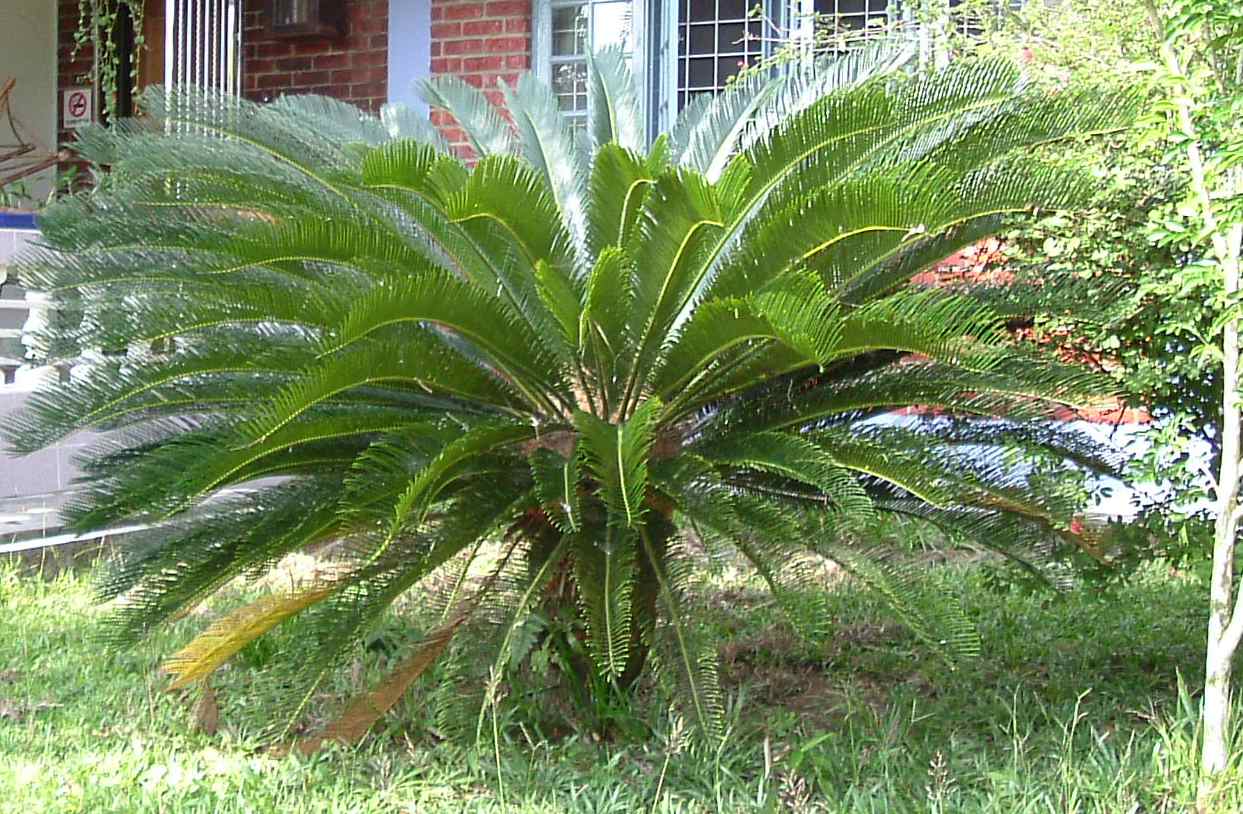
|
Fungi: A mushroom with a lacy veil around it, known as Butoh
antu raya ("the Big Demon's penis," unidentified) pushes up often
after rains.
It's poisonous. The Sebuyau, call it, a tad more delicately, kemi
antu raya, "Antu Raya's urine."
No list of plants would be complete without the two most
important economic crops here in Lundu, rice (Oryza sativa) and
pepper. Many
people in our kampong of Stunggang, and in other kampongs, grow
rice. It's not that they have to, although a hundred
kilos or so of rice certainly is a clear help in income, but that
Dayaks love their own traditional rice. Father John Lewis
Zehnder, priest at Christchurch, Stunggang over a hundred years ago
collected and named 80 different varieties. (To see Fr. Zehnder's
letter to the Sarakwak Gazette concerning his rice collection,
click HERE.) Apart from that
homegorwn rice simply tastes much
better than commercial rice, Dayak truly enjoy growing rice, and love
the land they grow it upon. They have doing this in loving fashion for
thousands of years. The rice -field below sits right next to our
house, and is cultivated by my wife's uncle's family.
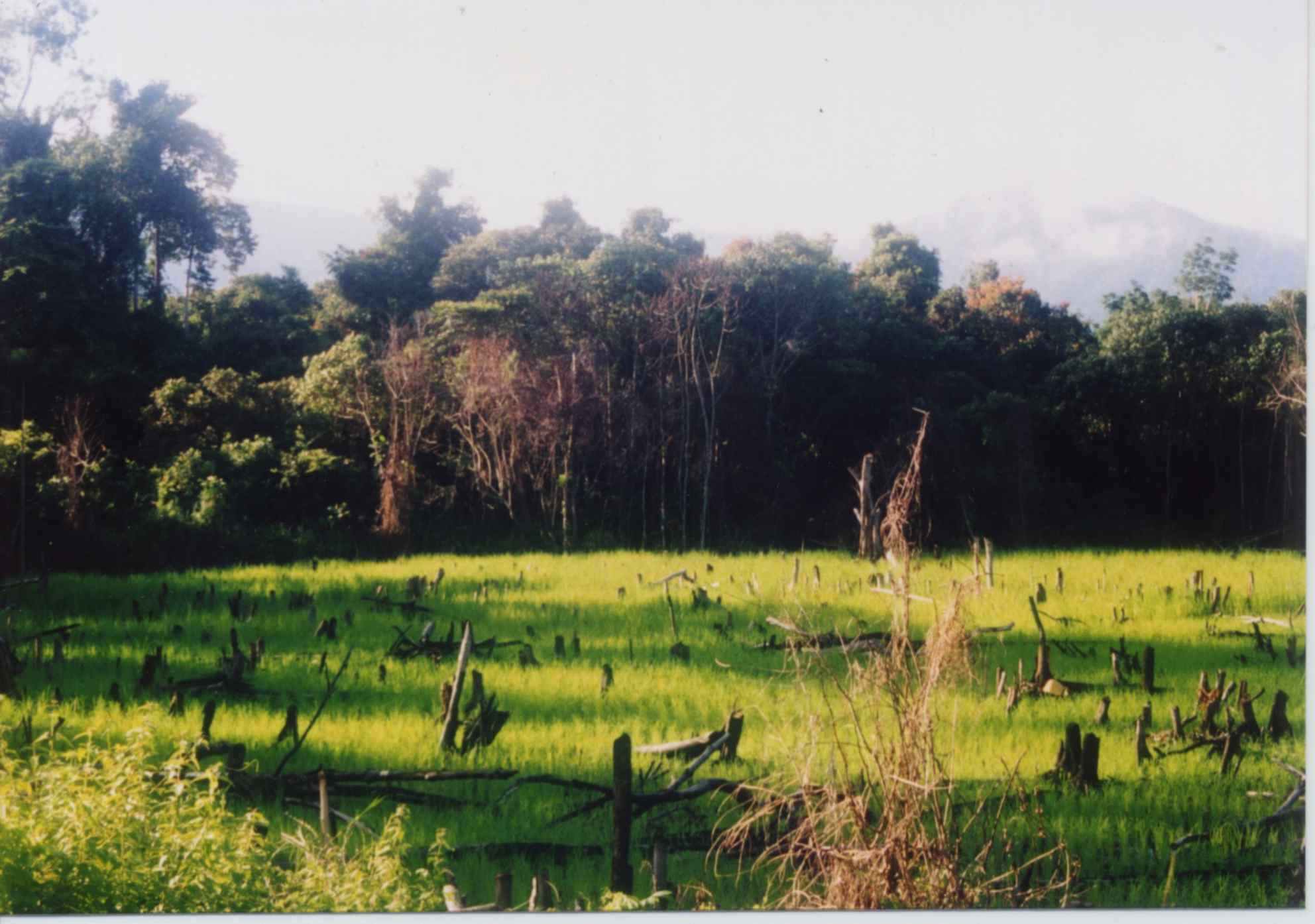
A note on rice terminology: rice seed, or rice when
it's in the field is called padi. Threshed and hulled
rice is called beras. Cooked rice is called asi
(in Malay nasi, as in nasi goreng, "fried rice").
The other important economic crop is pepper, Piper nigrum.
Many families, both Dayak and Chinese, grow pepper for sale.
Sarawak is a major world producer of pepper. Our neighbors,
Martin anak Lianghi and Maria Amoy, plant pepper and these photos I
took in their garden.
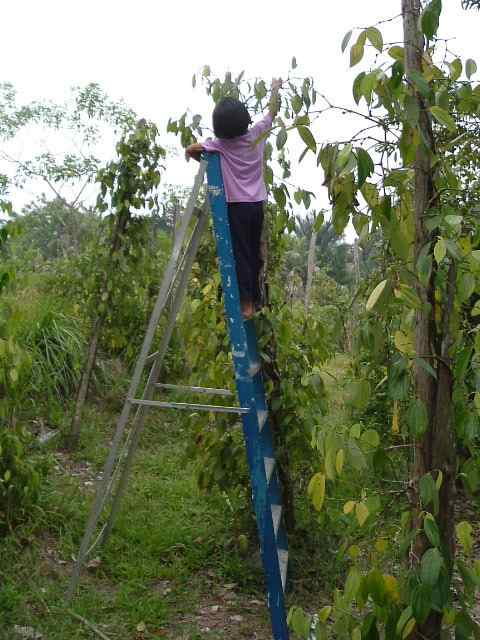
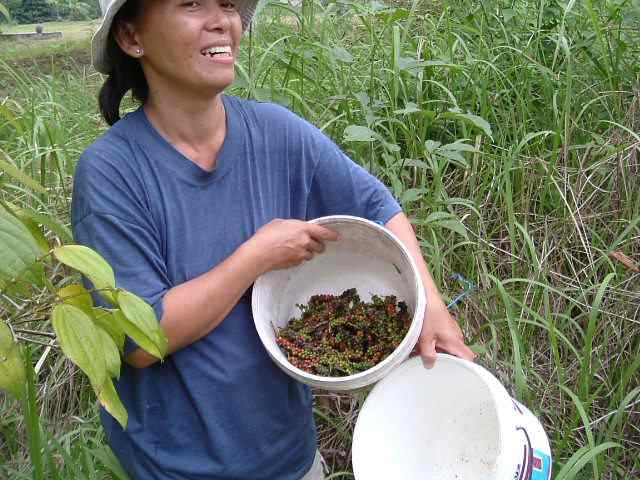
Rubber is much less important than it used to be.
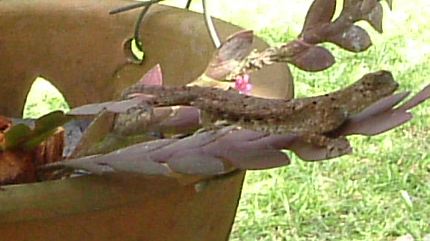


 (see picture
), red snappers, parrotfish, etc.
(see picture
), red snappers, parrotfish, etc.  This is probably Calchosoma caucasus, the second
largest beetle
in Malaysia, and it is male. A female found it three weeks later
and it was love at first site. The
female disappeared, and we hope her eggs have success.
This is probably Calchosoma caucasus, the second
largest beetle
in Malaysia, and it is male. A female found it three weeks later
and it was love at first site. The
female disappeared, and we hope her eggs have success.
